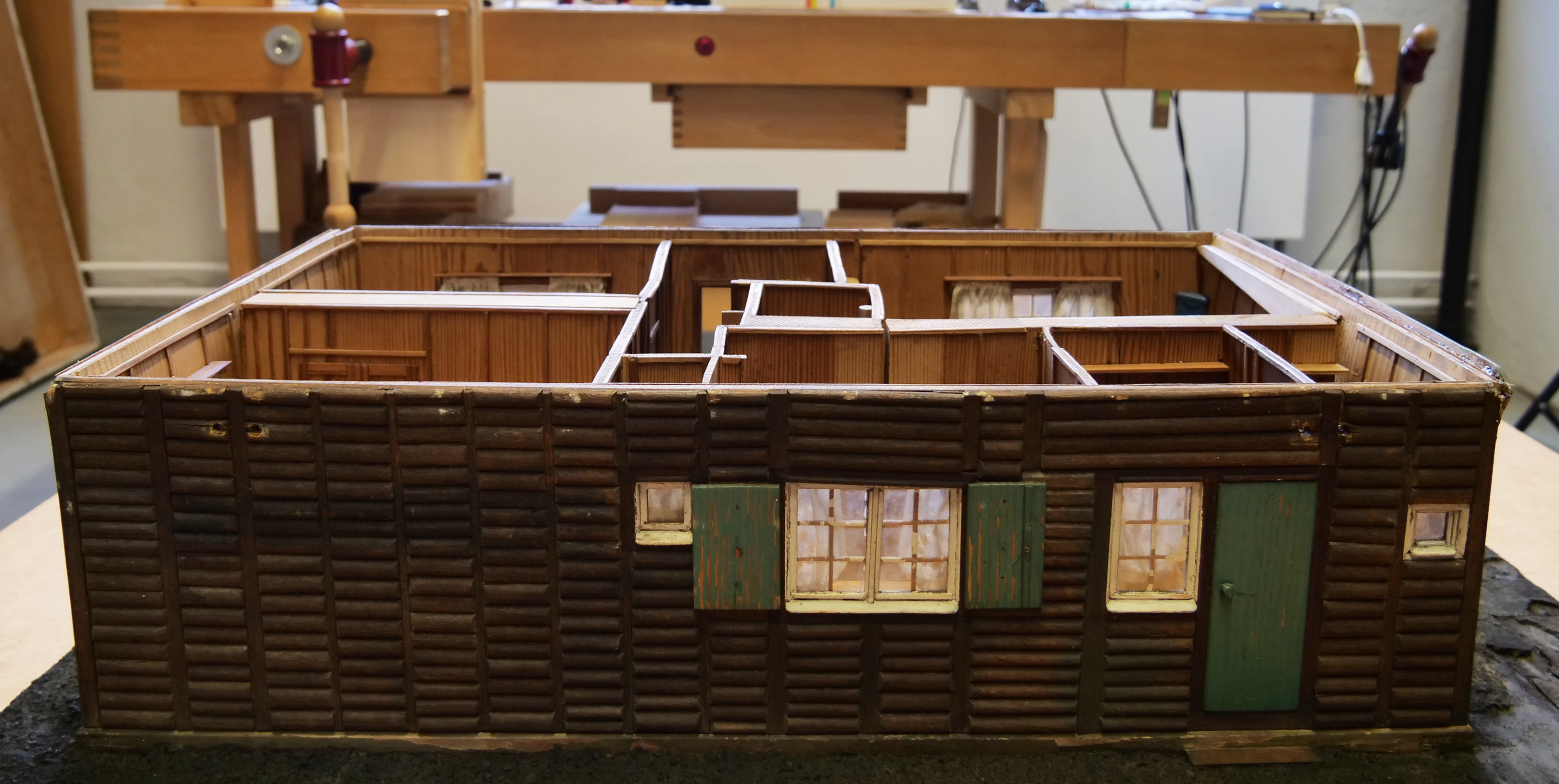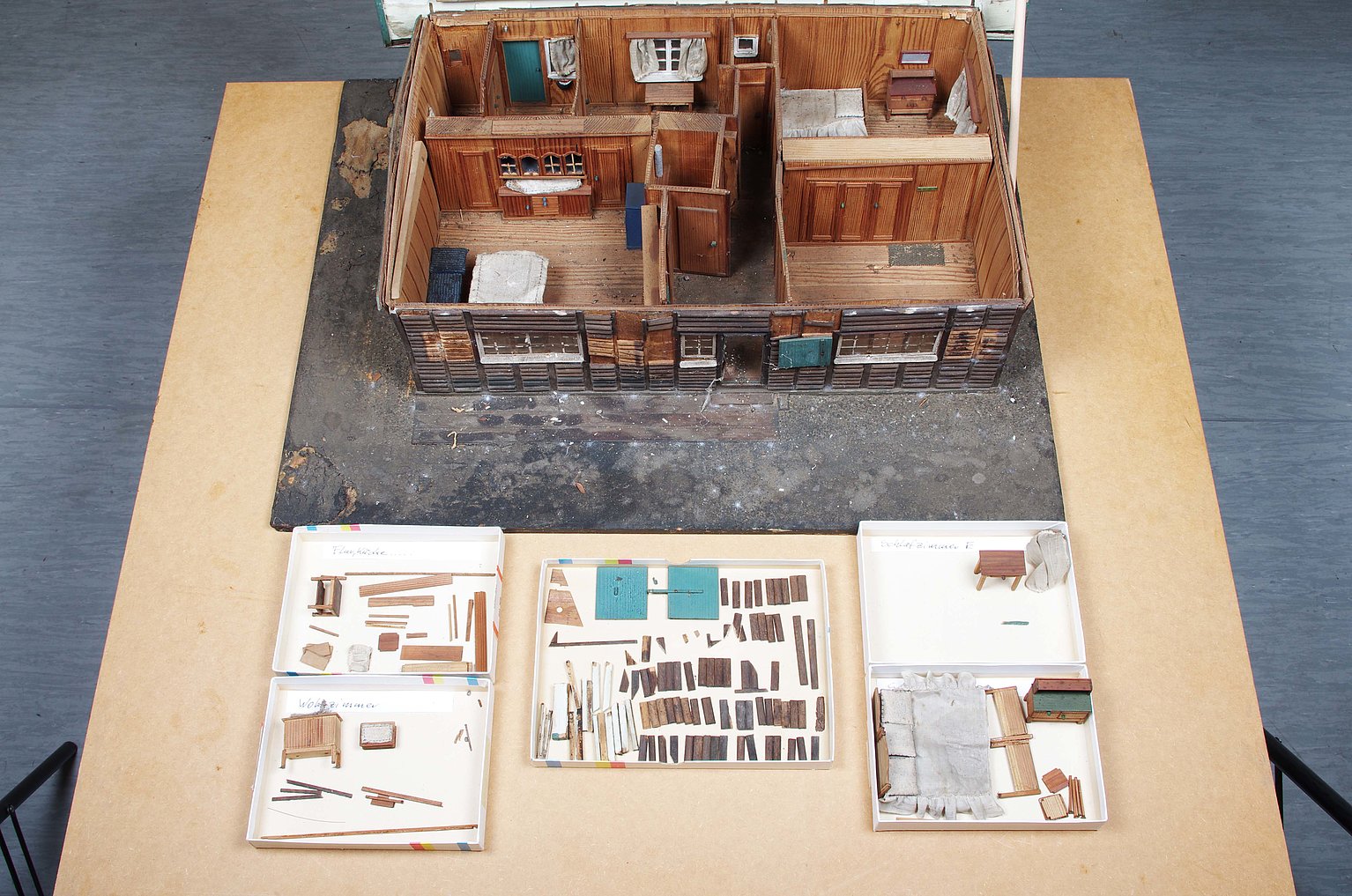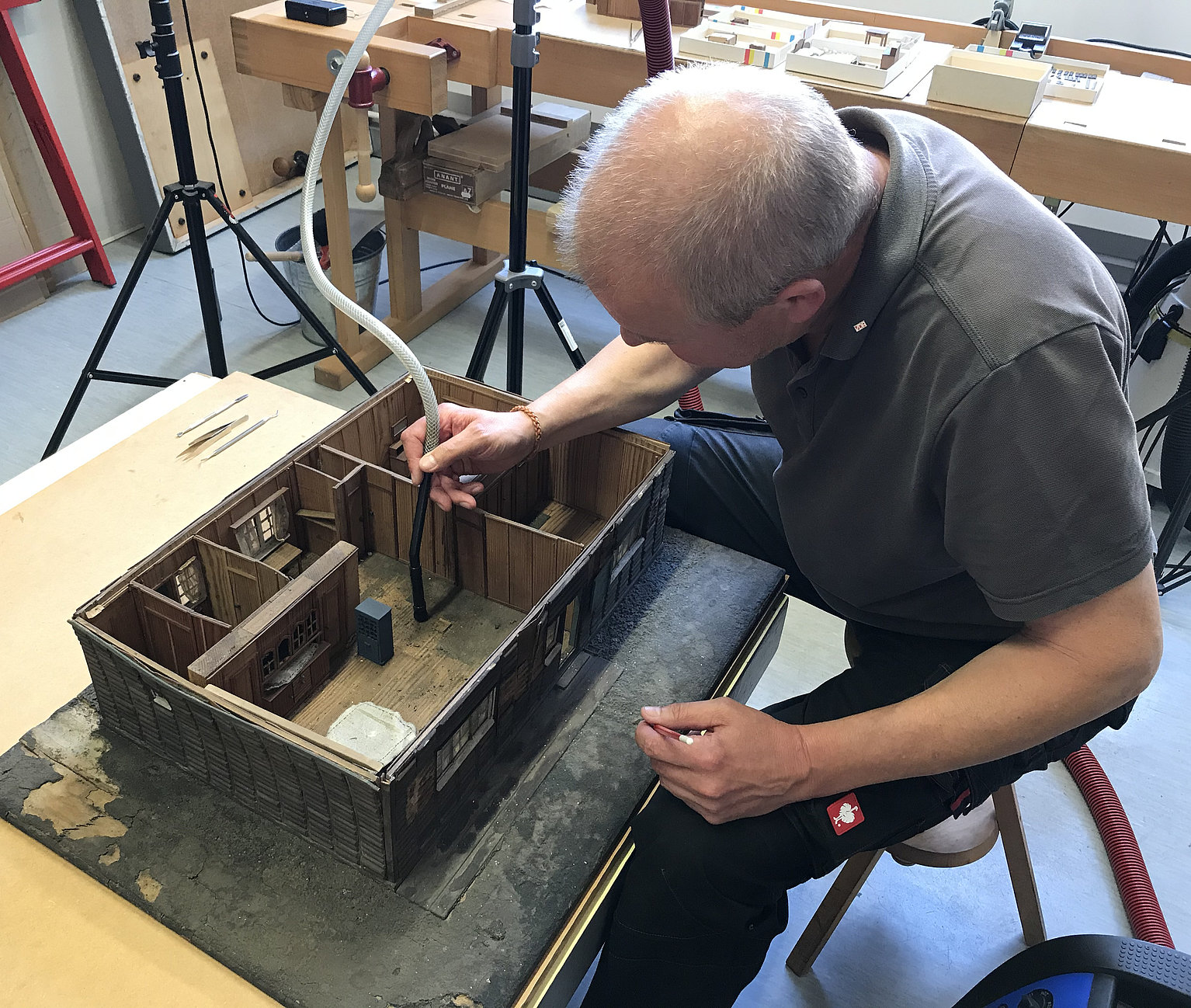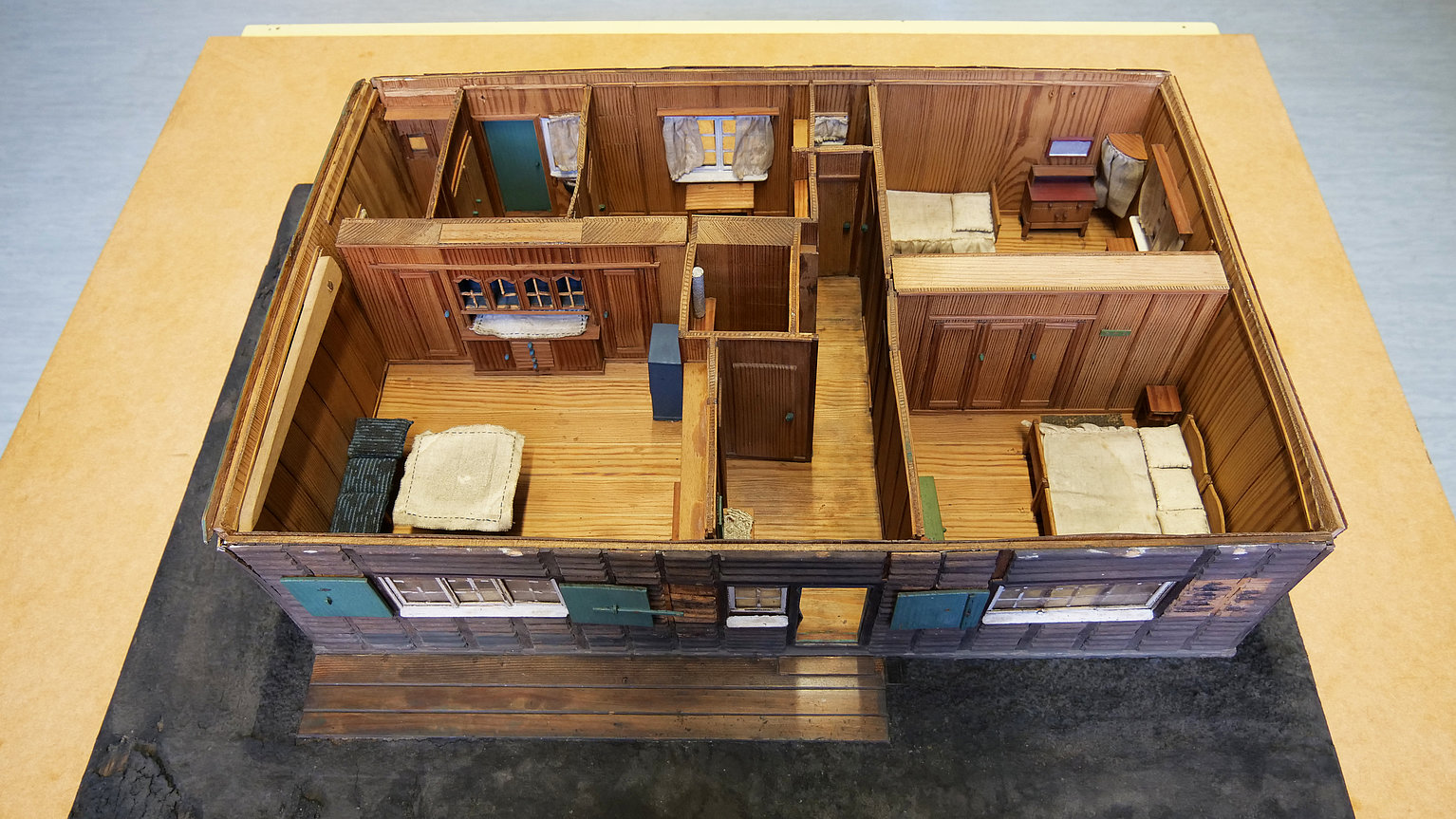Model of Wooden House to be Exhibited in the City
It was a big surprise when a model of a wooden house was discovered in the attic of that same wooden house while it was being cleared out in Hellerau near Dresden. Both the listed original house and the miniature belong to Deutsche Werkstätten and are a testimony to their extensive company history. The original house was built in 1921 as a show house.

At that time, company founder Karl Schmidt not only wanted to produce affordable machine-made furniture, but also to build houses that were standardised and as such, comparatively inexpensive. In Dresden-Hellerau alone, more than 50 timber houses were built, most of which are still in good condition today.
The company frequently used to work with models - in this case of the wooden house, presumably for viewing in the external sales outlets. For people to get a better idea, the miniature not only showed the outer shell, but also allowed a look inside. The roof can be folded open to reveal the rooms on the ground floor, complete with wardrobe, beds, bedside tables, curtains and many other small details.
This model is now on display as part of the city museum's special exhibition ‘Tobacco Rush on the Elbe. Stories between the Orient and Occident’. Beforehand, museum restorer Holger Meyer-Doberenz invested around four weeks in getting it back into good condition. To do this, he cleaned it with fine suction tools, brushes and sponges, fixed loose parts and added missing individual parts. He also worked on the outer walls, from which some of the veneer had peeled off.
But what is the connection between the Deutsche Werkstätten wooden house and the tobacco production in Dresden which is the theme of the exhibition? The city was considered a German tobacco stronghold in the 1920s. At that time, there were 140 factories and as many associated companies in the city. But although tobacco consumption was widely accepted in society at the time, there were also opponents of this way of life. These followed the life-reform movement that had already been lived in Hellerau in a particularly intensive form at the beginning of the 20th century.
Moreover, a lot of the people opposed to tobacco lived in their own settlement - consisting of wooden houses produced by Deutsche Werkstätten, which are also still in a good state of repair today in Golberoder Straße in the Leubnitz-Neuostra district of Dresden. We are very grateful to the museums of the city of Dresden for the extensive restoration of the model. It will be on display in the exhibition at the City Museum until August and will be handed over to the Chemnitz Industrial Museum for another exhibition next year.
Photos: ©Museen der Stadt Dresden / Sophie Arlet; DW/J. Richter


